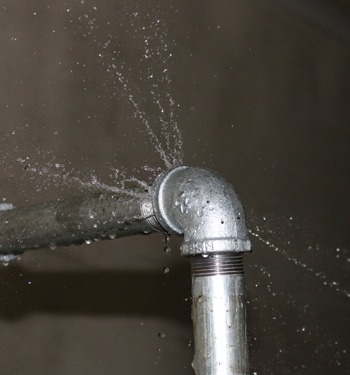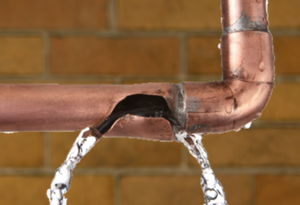Quick-Response Plumbing: Tips for Identifying and also Repairing Burst Pipes
Quick-Response Plumbing: Tips for Identifying and also Repairing Burst Pipes
Blog Article
This great article which follows pertaining to How to Prepare for Your Dishwasher Installation is highly informative. You should see for yourself.

A ruptured pipe is a significant emergency; you can only stand as you see water you pay dearly to rejoin with the earth. In even worse instances, you notice a swimming pool on your kitchen floor, which is a wonderful trip danger, especially if you have children around. If the pipe that ruptured remained in your wall surfaces, bad news: you may require to paint that entire section.
Exactly how can a catastrophe like a ruptured pipe be prevented and handled? Well, by paying attention to your professional emergency plumbing technicians and also following these policies.
Just how do I know when my pipes have ruptured?
Fluctuating water pressures
Pipelines do not simply burst in a day. You might have discovered that your kitchen area faucet or shower doesn't run right away when you transform the faucet. It may stop briefly for a couple of secs and then blast you with even more pressure than common.
In various other instances, the water may appear regular at first, then drop in stress after a couple of seconds.
Wet wall surfaces and also water stains
Before a pipe ruptureds, it will certainly leak, many times. If this consistent dripping goes undetected, the leak may graduate right into a vast gash in your pipe. One simple method to prevent this emergency is to keep an eye out for wet walls ad water spots. These water spots will certainly lead you right to the leakage.
Puddles under pipelines and also sinks
When a pipe bursts, the outflow develops a puddle. It might show up that the pool is expanding in dimension, and also no matter how many times you mop the puddle, in a few minutes, there's another one waiting to be cleaned up. Typically, you may not be able to trace the puddle to any type of visible pipes. This is an indication to call an expert plumber.
Untraceable leaking noises
Pipe bursts can happen in the most unpleasant places, like within concrete, inside walls, or under sinks. When the house goes silent, you may be able to listen to an annoyingly relentless trickling sound. Also after you have actually inspected your shower head as well as kitchen area tap, the dripping may proceed.
Beloved viewers, the trickling may be coming from a pipeline inside your wall surfaces. There isn't much you can do regarding that, except tell an expert plumber.
Shut off the Water
When water ices up, it increases in quantity by concerning 9 percent. As well as it broadens with remarkable force: The stress inside pipelines might go from 40 pounds per square inch to 40,000 psi! No pipe can hold that much stress, so it bursts. The break might happen where the ice forms, yet regularly, it happens where water pressure finds a weak spot in the pipeline. That might be inches or even feet from the frozen location. Discover the water shutoff valve as well as turn off the water to stop even more damage. You could likewise require to turn off the electrical power too, depending upon where the leaks takes place as well as just how huge it is.
Contaminated water
Many individuals think a burst pipe is a one-way electrical outlet. Rather the contrary. As water flows out of the hole or wound in your plumbing system, pollutants find their method.
Your water might be contaminated from the resource, so if you can, check if your water container has any type of problems. Nonetheless, if your drinking water is supplied as well as purified by the local government, you ought to call your plumber immediately if you see or scent anything funny in your water.
What do I do when I detect a burst pipeline?
Your water meter will remain to run even while your water wastes. To decrease your losses, discover the main controls as well as turn the supply off. The water pipe are an above-ground structure beside your home.
How to Fix & Detect a Leaking Pipe
How Do I Know if a Pipe is Leaking?
Leak detection tests can help you determine if your pipe has a leak. Even if you don’t see an apparent leak, you should still conduct leak detection tests regularly to save water and money—and prevent major damage to your home.
Water meter. It can be helpful to figure out what your usual water meter usage numbers are and then monitor them regularly. To monitor your meter, first, turn off all water faucets in your home. Check the meter and write down the numbers. In a few hours, check the meter again. If the numbers have changed, you have a leak. Water gauge. Use a water gauge to test your water pressure. Your showerhead should produce a certain amount of water pressure based on its model and design. If the pressure is lower than it is supposed to be for that specific showerhead, your home likely has a leak. Puddles. Look inside your bathroom, laundry, and kitchen sink cabinets. Puddles around the cabinets or around toilets, tubs, showers, and washing machines indicate the presence of a leaking pipe. You may also notice loose tiles, peeling or flaking paint, or mold caused by water accumulation. Napkin test. Even if you don’t see any puddles, you may still have a leak. You can test for water leaks in the bathroom, laundry, and kitchen by wiping below-sink connections with a napkin, paper towel, or piece of toilet paper. If it becomes damp, you probably have a leaking pipe under the sink. Discolored walls. Walls that are discolored—usually with brown or yellow stains—or bulging might mean that they have been impacted by water damage caused by a leaking pipe. Smell. A leaky pipe will create sitting water, and over time, that water may develop a musty smell. If your home smells musty, but you can’t locate the source, it may be due to a leak. Steps for Fixing a Leaking Pipe
A leaky drain can be remedied by tightening the pipe base, replacing the drain seal, caulking the rim, and tightening the pipe nut. Similarly, a leaking toilet pipe can be treated by tightening the packing nut. You may also need to replace the valve. A leaky faucet may just need tightening or replacement of the washers. If that doesn’t work, consider replacing your faucet. If your pipe has a hole in it, you may want to use a pipe leak sealer or pipe leak tape. This quick fix for water pipe leaks can also temporarily fix a copper pipe leak. https://www.ahs.com/home-matters/quick-tips/how-to-tell-if-pipes-are-leaking/

I am just very occupied with What to Know Before Installing a Dishwasher and I really hope you liked the new blog entry. Remember to take the opportunity to promote this blog post if you appreciated it. I love reading our article about How to Install and Connect a New Dishwasher.
Go Deal
Report this page